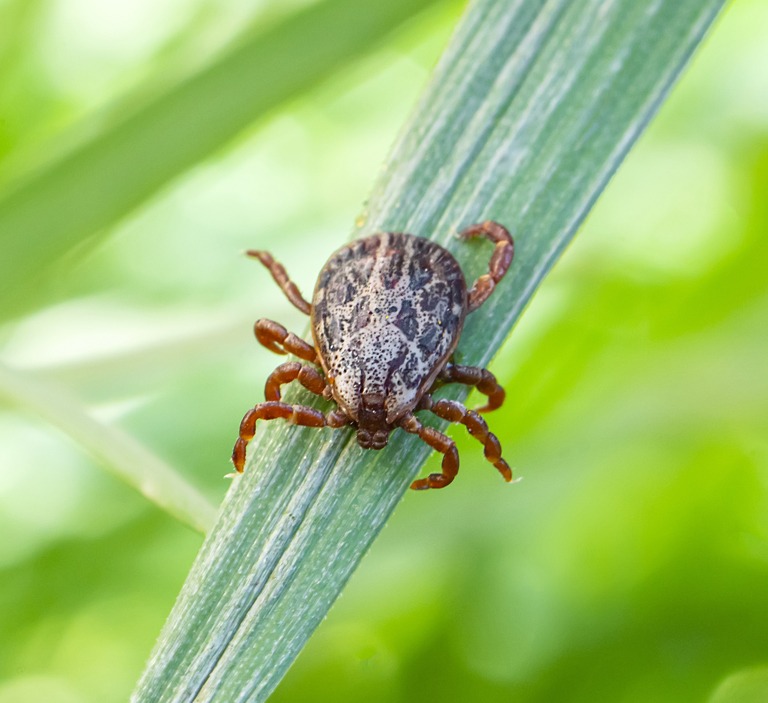If you enjoy spending time outdoors throughout the warmer seasons of the year in Pennsylvania, you probably already know the importance of protecting yourself from ticks. Because they are so tiny, it’s challenging to remove a tick from your body before they have the opportunity to bite and burrow into your skin. Once they do, you are open to the potential of contracting one of the many diseases they carry with Lyme disease the most significant concern.
Pennsylvania has one of the highest rates of Lyme disease in the United States, with roughly 30% of blacklegged ticks acting as carriers. It does take 24-48 hours for Lyme disease to move from a tick into your system so it’s best if you can find and remove the tick before the 24-hour mark.
If this information is causing you to think about never leaving the house, it is important to know that not all ticks carry disease.
Since knowledge is power, take a few moments to review this guide covering the types of ticks in Pennsylvania, where they can be found and the diseases they may carry.
Blacklegged Tick (Ixodes scapularis)
The blacklegged tick, is more commonly known as the deer tick and it is one of the most common carriers of Lyme disease. This tick can also carry anaplasmosis (leading to fever, headache, chills and muscle aches), babesiosis (resulting in an illness that destroys red blood cells), and Powassan virus (a virus that can be asymptomatic at first but leads to fever, headache, vomiting and weakness with the potential to accelerate to encephalitis or meningitis). It’s important to remember that the blacklegged tick will remain active even during cooler months as long as temperatures are above freezing.
American Dog Tick (Dermacentor variabilis)
American dog ticks can carry and transmit Rocky Mountain Spotted Fever (resulting in fever, headache and rash) and, although rare, Tularemia (which presents as skin ulcers, swollen and painful lymph glands, inflamed eyes, sore throat, mouth sores, diarrhea or pneumonia).
These ticks are found anywhere where there is little tree cover – in grassy areas like fields and on trails, walkways, and even sidewalks. The American dog tick is more active in the spring, summer, and early fall.
Lone Star Tick (Amblyomma americanum)
This tick gets its name from the distinctive white dot or “lone star” on the back of adult females. Lone star ticks can carry ehrlichiosis (with symptoms including fever, chills, severe headache, muscle aches, nausea, vomiting, diarrhea, loss of appetite, confusion and more common in children, a rash), tularemia, and Southern Tick-Associated Rash Illness – also known as STARI (causing a red, expanding bull’s eye rash around the bite with symptoms that include fatigue, fever, headache and muscle and joint pain). These ticks are commonly found in wooded areas, especially where there is dense undergrowth and around animal resting areas.
Groundhog Tick (Ixodes cookei)
As their name indicates, groundhog ticks will primarily feed on groundhogs and are usually found in or near the dens of these hosts. However, they can and will also bite humans. They are not known to transmit Lyme disease but they can carry the Powassan virus. Also known as the woodchuck tick, it is very similar in appearance to the blacklegged deer tick.
Brown Dog Tick (Rhipicephalus sanguineus)
Noticing a pattern with these tick names? The brown dog tick feeds primarily on dogs, and not just brown dogs – that is a reference to the color of the tick. They will also bite other mammals, including humans. These ticks can transmit Rocky Mountain spotted fever. They prefer wooded and grassy areas but can also be found in coastal and urban areas. Unlike most other ticks, the brown dog tick can survive and reproduce indoors. So, yes, they can also be found in your home – usually in the cracks around baseboards or in window and door frames.
Rabbit Tick (Haemaphysalis leporispalustris)
While these ticks are often found on rabbits, they prefer to feed on other small mammals and ground-dwelling birds. While they can be carriers of Rocky Mountain spotted fever and tularemia, rabbit ticks do not typically feed on humans. They live mostly in wooded areas and are active spring through early fall.
Bird Ticks (Ixodes spp. and others)
These are various species of ticks that feed primarily on birds but they can also bite humans. They may carry disease but rarely as common as the blacklegged tick in transmitting them to humans.
Enjoy Nature with Care
Don’t let concern about ticks get in the way of your enjoyment of the outdoors. Make it a habit to check for ticks when you return indoors. If you’re seeking extra peace of mind, consider our Flea and Tick control services.

